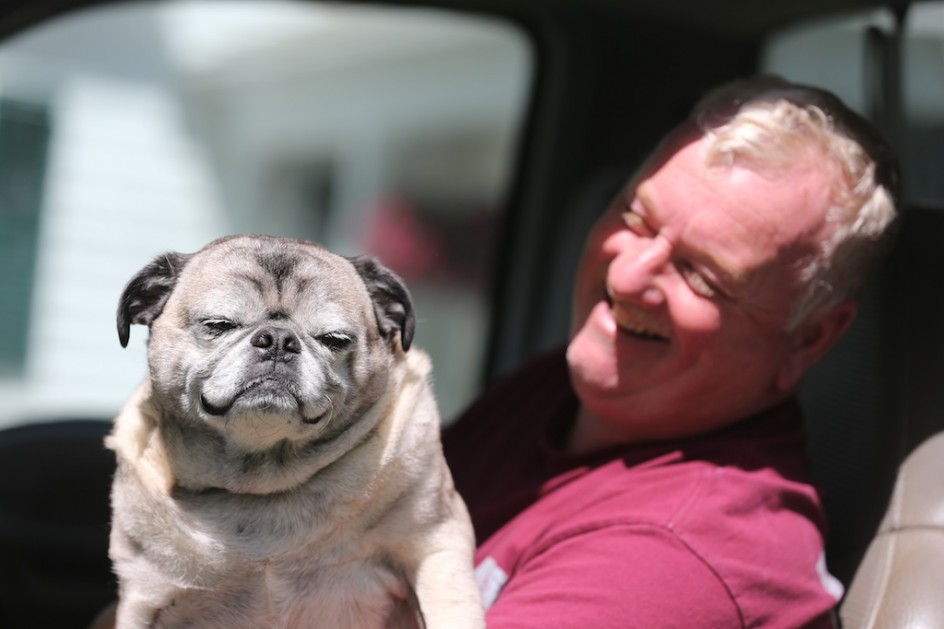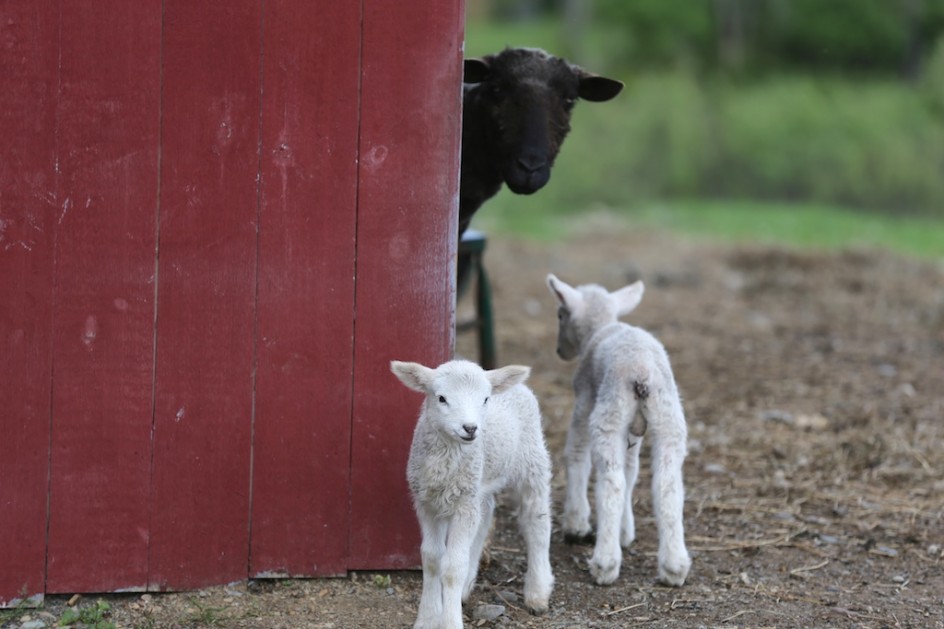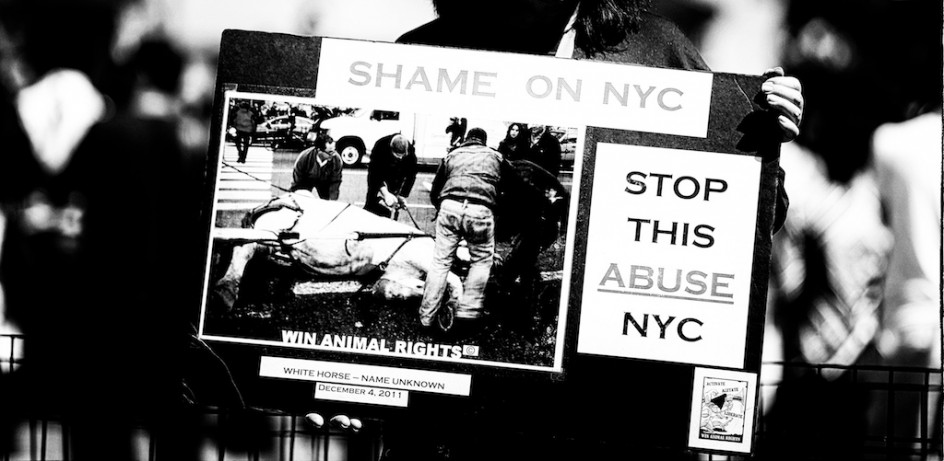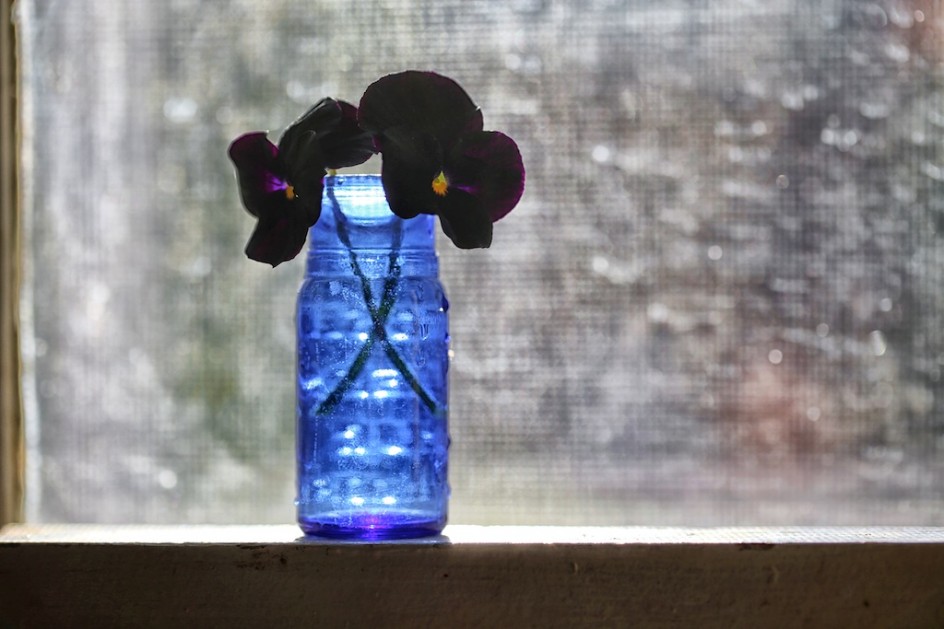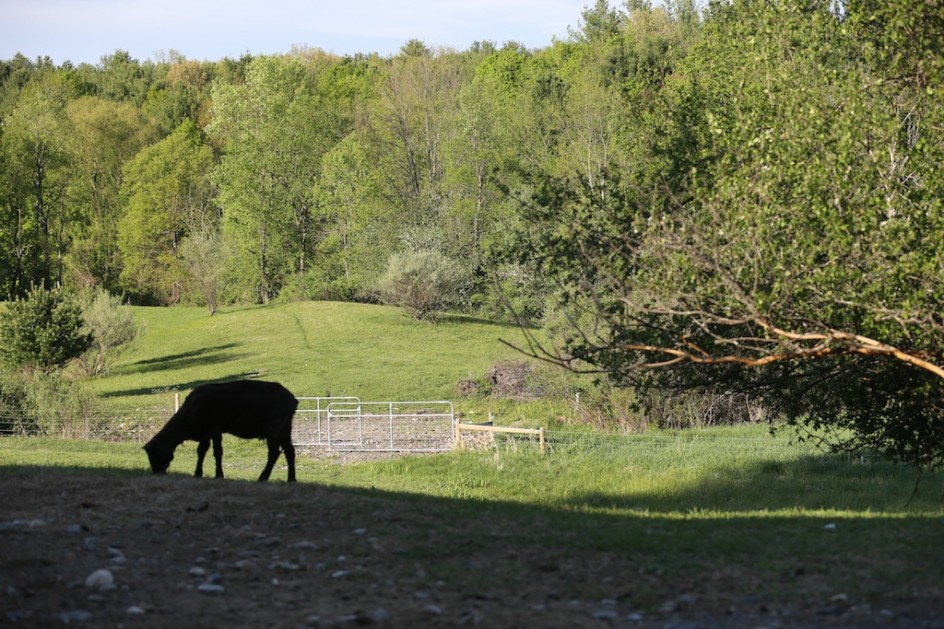
Last week, I decided Ma ought to be euthanized. She was struggling with her pregnancy, suffering from toxemia, fluids were pouring out of her nose and uterus, she was gasping for breath and struggling to walk. I feel strongly that animals ought not be kept alive and suffering for the gratification of human beings. I see it all the time, it is awful and I didn’t want to do it.
The carriage horse controversy has awakened me to the need to reclaim the idea of animal rights and return the discussion to people who live and work with animals, and love them. Keeping animals alive at all costs is becoming an unsustainable idea. In New York, I see the groups that call themselves advocates for animal rights are much more interested in politics and ideology than the rights of animals. We need to reclaim the idea of animal rights.
In America, the primary ethos involving animals is rescuing as many as possible and keeping them alive by any means at all costs. There are more than 12 million dogs in shelters now and the rescue movement keeps arguing for more and more to be rescued, sheltered, and adopted. Many now argue that it should be illegal to buy dogs from breeders, and that it is immoral to get a dog from any source but a shelter.
As a lover of border collies and Labs, I’m not sure Americans understand that these dogs would vanish from the world if the only acceptable way to get a dog is to rescue one. The waiting list for horses to get into rescue farms is between six months and two years now and the animal rights movement wants to add the safe and well cared for New York carriage horses to the waiting list. Countless dogs now languish in “no-kill” shelters, imprisoned in crates for years, often for the rest of their natural lives in the most unnatural – and cruel – circumstances.
The definition of humane seems to be avoiding death at all costs. No one talks much about quality of life, for animals or for people.
Humans do often talk about their wish to die well and on their own terms, about the right to die rather than suffer endless medical procedures or waste away in nursing facilities. But we have lost all respect for death when it comes to animals, we deny them the blessing and option of death, even when it would be far more merciful – and practical – than life. And death is as much a part of the animal world as life, sometimes more.
A friend told me about a dog with a bone deformation whose front legs were crippled. He was “rescued” and given two prosthetic legs and moves around in a wagon/wheel chair. He is a big hit, hailed on TV and taken to schools as a lesson about accepting individuality. The vet who saved him is showered with praise and gratitude. The reporter said the dog seemed very happy, everyone who sees him thinks he’s adorable.
It’s the same thing in reverse that the animal rights people say about the horses – they always say they are sad.
Dogs and horses aren’t happy or sad – those are human emotions – they are excited or calm, content or uneasy, affectionate or guarded. The dog has no say in what happens to him – he doesn’t really know what happened to him – he will adapt to whatever he needs to adapt to in order to survive. I can only imagine what he went through dealing with two amputations and a wagon to get around. It is not always a bad choice for a dog like that to be saved. But it is not always a good choice either. Entertaining humans is something dogs have learned to do over thousands of years, it is why they sleep in bed and raccoons don’t.
I would not subject a dog of mine to the fate or expense of that dog. There is no moral reason that every animal in any condition must be rescued at any cost. I find “no-kill” shelters horrific places, I would never want a dog of mine to spend years in one. We don’t have the money or the space or the right to save every animal in the world, that is movement without reason. Dogs have the right to die when they can no longer function as dogs – or to live if there are compelling reasons to do so. Many horses would be far better off if they could be euthanized on their farms rather than packed into trailers and hauled off to Canada or Mexico for slaughter.
Many dogs would be better off being euthanized than spending years confined in crates in noisy and crowded animal shelters. The “no-kill” shelter is a human idea about animal welfare, no animal in the natural world lives a “no-kill” life, there is no such thing as a “no-kill” farm. This idea does not come out of the natural world or the lives of animals, it comes out of a human projection of what feels good to us. It has carried us over the top when it comes to the rights of animals.
Death is sometimes the best option for sick or dying animals, even for animals that cannot be kept any longer in their homes.
I am glad I didn’t have Ma euthanized, I love seeing her with her lambs. But I also saw how much she suffered, how much it cost to keep her alive. I was reminded how animals, like people, have the right to die in dignity and comfort. It is not always the best option to keep them alive. If Red was crippled in his two front paws, I would not cart him around in a wagon on wheels as an example to children of the beauty of accepting differences in dogs, I would put him down in a heartbeat and I would tell the children that this is the real life of real animals, this is the truth about the lives of animals. Everyone cannot be saved, every animal cannot live in paradise.
Red has the right to die in dignity, just as I do. So does Ma.
I am far from certain it was merciful or humane to subject Minnie to the amputation of her leg. I am not certain we should have spent that money on a barn cat. Maria loves her, and I am very fond of her as well. It is easy to look at her and say how good a decision it was to keep her alive. It feels good and I am often praised for it. But I am not as sure as everyone else is about the decision, she struggles every day with her amputation, and in many ways. I know it was good for us, but was it really good for her?
I believe animals have the right to die. If human beings never have the option of euthanizing animals, many will be forced to give them up or avoid them altogether – I would never accept an animal on my farm that could never be put down, hardly any average person with a farm can afford to do that. People with pets have no idea what it costs in time, money and energy to keep animals, very few of us can afford to keep them alive to the end of their natural lives, no matter the cost. All of us on farms have learned not to speak of it except with one another, but it is the truth, it is the reality.
I am enjoying Ma and I love photographing her. Her lambs have touched my heart. I am not certain it was humane to subject her to what it took to have those babies and recover. I am not sure a sheep on any farm is worth $1,000 in medical care, which is what we will end up spending on her so that she could live. If I were a real farmer, instead of a writer with a farm, I could never do that, it would spell the end of my farm.
The animal world in America is on a collision course with reality. Animals are being emotionalized and personified beyond reason. This may cost the New York Carriage Horses their lives.
Since the recession, countless animals have been given up by people who cannot afford the rising costs of keeping them. Instead of dealing with this awful reality, we keep rescuing more and more animals, even to the point of importing them from other countries and other regions so we can have more animals to adopt and rescue. This is not animal rights, this is the exploitation of animals by needy people. It is neither thoughtful nor humane, it is putting countless animals in danger of slaughterhouses or warehousing and confinement. Our society cannot afford it, and it represents a profound loss of perspective. Can we really spend billions of dollars rescuing dogs while so many people struggle to survive?
I am showered in praise for keeping Ma alive and getting her through her troubles, and I love praise. But it is too simple, too black-and-white, such praise doesn’t come from the real life of real animals, or the hard choices anyone who lives with animals has to make.
Animals need rights. The horses are a powerful example, in New York, the people who claim to speak for their rights of animals seem only to have one idea – keep them away from us and out of sight. We need to reclaim our respect for death. Animals have the right to die, the people who own them have the right to terminate their lives when necessary. We do the best we can for as long as we can, that is the standard.
That is the lesson of Ma, for me, I am grateful she is here, I am far from certain it was the right choice for her or for me.

